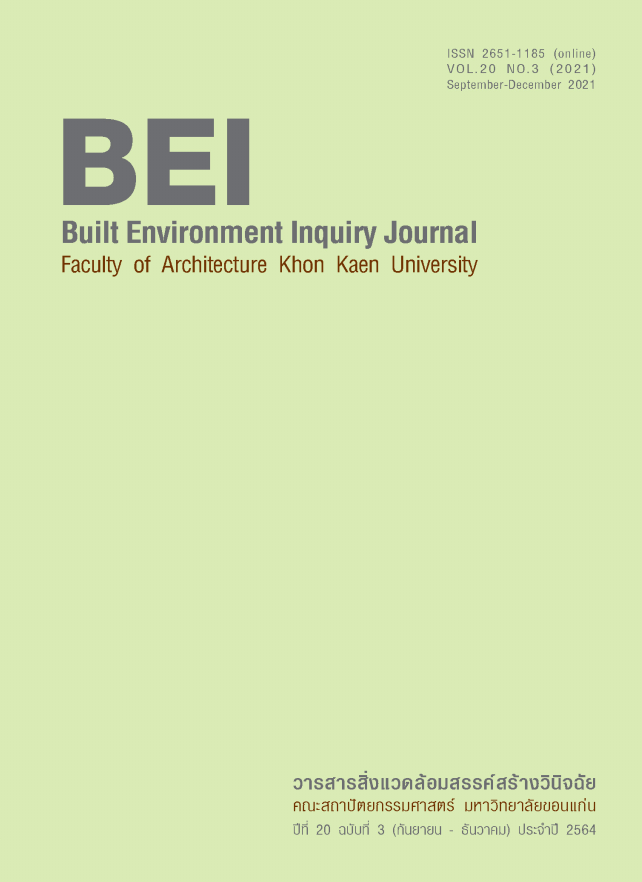Community Participation in Architectural Design and Planning as a method for Heritage Site Conservation and Development
DOI:
https://doi.org/10.14456/bei.2021.16คำสำคัญ:
Community Participation in Architectural Design and Planning, Heritage Site Conservation and Development, Nong Kud Tingบทคัดย่อ
Nong Kud Ting at Bungkan Province, is a large natural wetland with area of 6,535 Acre and high biodiversity habitat of over hundred wild life species. However, the life-sustaining basin has been being under threat by the growth of urban area, manifested in the shape of large-scale rice farms, build up area and animal hunting in the wetland and adjacent area. Hence, Nong Kud Ting was registered to the world heritage Ramsar Site since 2011, the similar year of Bungkan has official appointed to the latest Province in Thailand. The Ramsar convention intensifies deep and violent conflict between three concerned agencies particularly; International organization and government agencies - Local Administration Organizations and the 3 local communities. The research project of “Community Participation in Architectural Design and Planning as a method for Heritage Site Conservation and Development” was conducted as a tool to solving the stakeholder’s conflict and creating balance solution between Ramsar ecosystem conservation and community development.
The research objectives aim to determine rules for appropriate overall preservation and development of the heritage site that complied with the Ramsar convention as well as the demand of stakeholders with public participatory process. Next, to construct the walk way and public space to be the tangible buffer zone that prevented invasion to wet land area. And to promote participation between three agencies to solve conflict by cooperative planning method. The research applied “Ladder of Participation (PAR)” purposed by Arnstein (1969) as theoretical framework by mixed scale of the ladders including; consultation, partnership and lastly delegated power. At the end of project, the research achieved a master plan of land used around Nong Kud Ting and the architectural design of recreation area and natural trail.
The research found that participation in architectural design and planning is a practical method for the Ramsar Site Conservation and Development. The key factor of project successful was stakeholder’s inclusiveness at the beginning to the last stage of operation. Particular, partnership concept in form of joint committees shaped trustworthy between stakeholders and share their sense of ownership for long term project responsibility.
เอกสารอ้างอิง
Marisa B. Guaraldo Choguill, A Ladder of Community Participation for Underdeveloped Countries in Habitat International, Vol. 20, No.3. Sheffield: Pergamon, 1996. Pp. 431-444.
P.Samuel, Community Participation in Development Project: the World Bank Experience in M. Bamberger, Readings in Community Participation, Vol. 1. Washington DC: The Economic Development Institute of the World Bank, 1986, p 46.
ดาวน์โหลด
เผยแพร่แล้ว
รูปแบบการอ้างอิง
ฉบับ
ประเภทบทความ
สัญญาอนุญาต
ทัศนะและข้อคิดเห็นของบทความที่ปรากฏในวารสารฉบับนี้เป็นของผู้เขียนแต่ละท่าน ไม่ถือว่าเป็นทัศนะและความรับผิดชอบของกองบรรณาธิการ




